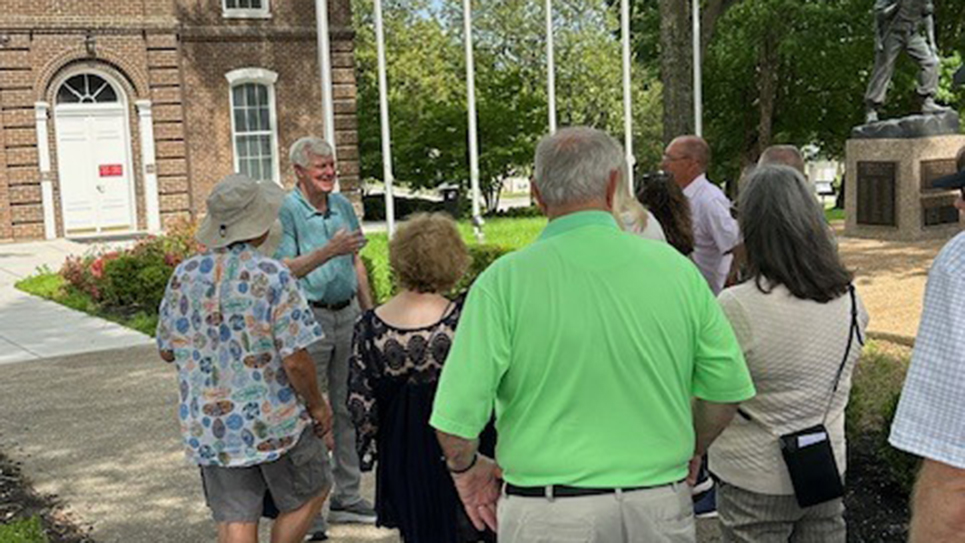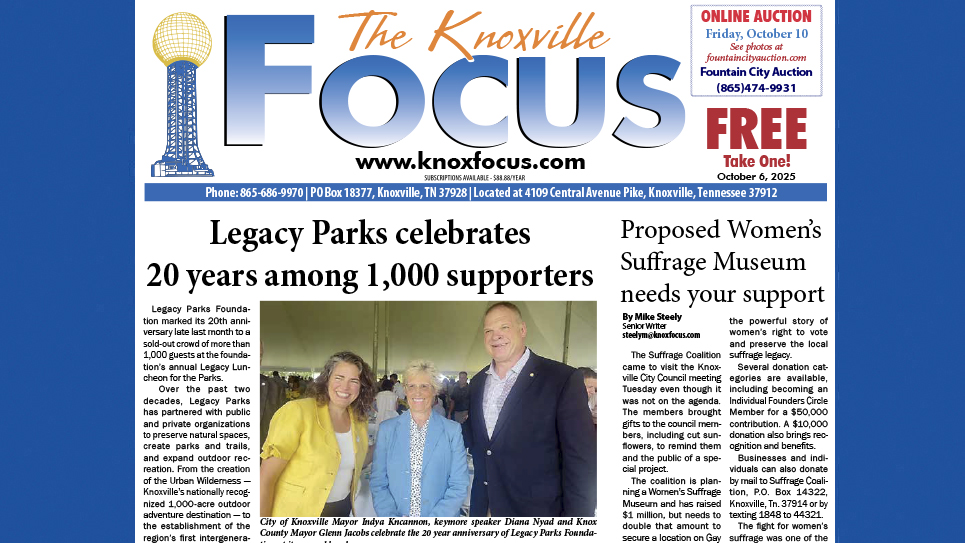By Mike Steely
With the upcoming remembrance of 150 years since the end of the American Civil War being held in Knoxville a little known fact is the importance of Cumberland Gap in that struggle. The historic pass played two important roles in the history of the United States, the first as a passage for settlers and adventurers in moving from the coast to the inland as the nation expanded and the second as the stronghold of both sides in a gap that divided the two nations during the 1860s.
Just an hour or so north of Knoxville, the Cumberland Gap National Park can be visited for the overlook into both Tennessee and Kentucky and for the Confederate and Union positions there. The story of the attempts to capture and hold the peak is little known, but was very important at the time both for the control of movement between the warring states and for the location’s importance in the capture or control of Knoxville and East Tennessee.
You can tour the little town of Cumberland Gap, see the old buildings and furnace there, or walk the reconstructed “Wilderness Road” blazed there by Daniel Boone. You can tour “Cudjo Caverns” and exit the cave through “Soldier’s Cave” where Civil War soldiers were hospitalized.
A drive through the Cumberland Gap Tunnel brings you to the National Park Headquarters in the park, which has a museum and lots of information. From there you can drive up the north face of Cumberland Mountain to the Pinnacle Overlook and hike along the top. You’ll find many earthen walls and cannon sites atop the peak built by both sides during the struggle.
Cumberland Gap was occupied early in the war by Confederate forces which began building defenses, placing large guns pointing north, and for two years was held for the South. The historic pass changed hands four times, the first time in 1862 when the Union Army, led by East Tennessee Volunteers who served as scouts and soldiers, captured the gap, bypassing the northern portion by way of Powell Valley and marching into the abandoned fortifications from the west.
But Gen. George Morgan’s forces only held the gap a few months, from June until September, when they were starved out and basically surrounded by Confederate forces. The Yankees destroyed everything they could, abandoned the gap, and marched north into Northern Kentucky.
So, the South held it first, the Union held it briefly, and then the South returned to occupy the important position.
In 1863 Union forces under Gen. Ambrose Burnside bypassed the gap with thousands of soldiers and marched into the Tennessee Valley by way of Scott County and approached Knoxville from the west. The march resulted in the fall of Knoxville, the unsuccessful battle to retake our city by Confederate forces, and the Union occupation of the region for the remainder of the war.
Cumberland Gap actually fell to Union control after Knoxville. Northern forces to the north were placed in the Pineville, Ky. area and, to the south, were approaching under orders of Burnside. The Confederate forces at the gap were surrounded, just as the Union Army had been a year earlier, and eventually most of them surrendered. Following the success in East Tennessee U.S. General U.S. Grant toured the gap and proclaimed it the “Gibraltar of America.”
Another little known fact is that the same Union Cavalry commander that arrived first at Cumberland Gap in 1862 was the same officer who arrived first to capture the gap in 1863. Colonel John DeCourcy, an English volunteer from Ireland for the Northern cause, disobeyed Burnside’s instructions and, with a surprisingly small force, took position of the stronghold before Burnside could arrive.
Burnside charged that DeCourcy’s disobedience resulted in the escape of the Confederate Calvary there who rode off before the surrender. The English volunteer had marched his smaller force from Pineville and had the men descent a ridge, circle back, and march down again and again. From a distance the Rebel forces though he had many more men that he actually commanded.
The officer was court martialed, resigned, and returned to England, where he was eventually declared a Baron and lived until 1890.
Just beyond the national park going north is Middlesboro, Kentucky, a little city that sits in the bowl of an ancient meteor crater. The city didn’t exist during the Civil War but grew as a result of the coal boom in the 1880s. It has a unique history as well and a link to the English investment in the United States.






